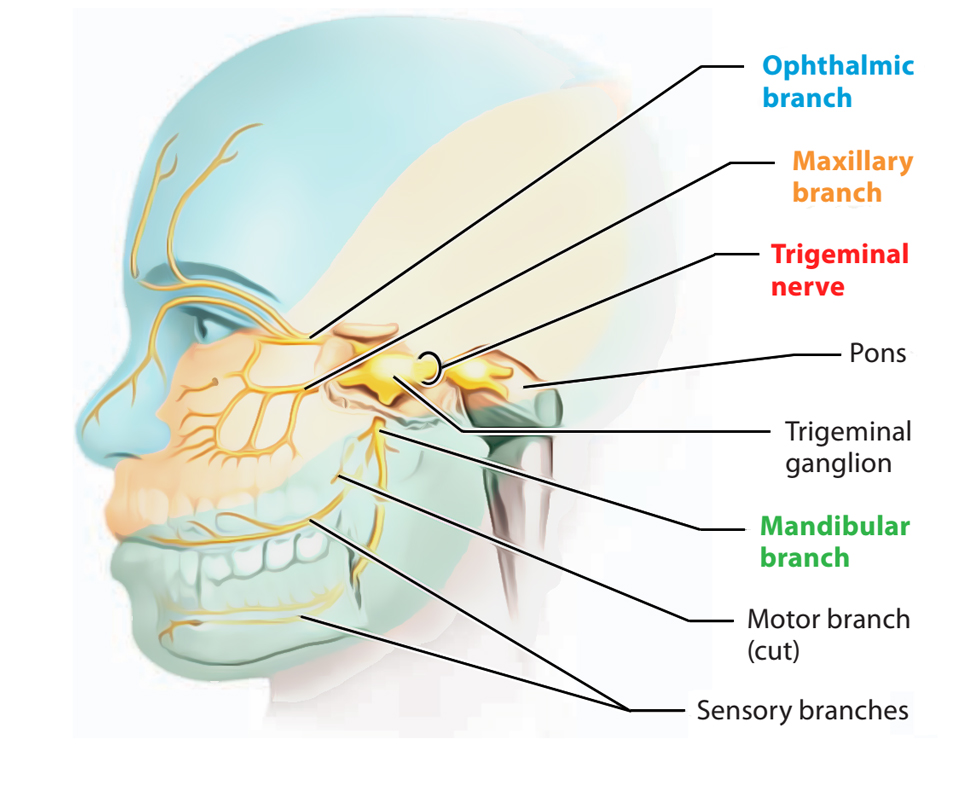
FIFTH CRANIAL NERVETRIGEMINAL NERVE
The maxillary nerve arises from the anterior convexity of trigeminal ganglion between ophthalmic and mandibular divisions of the trigeminal nerve. It is a medium-sized branch compared to the smaller ophthalmic nerve and the larger mandibular nerve.
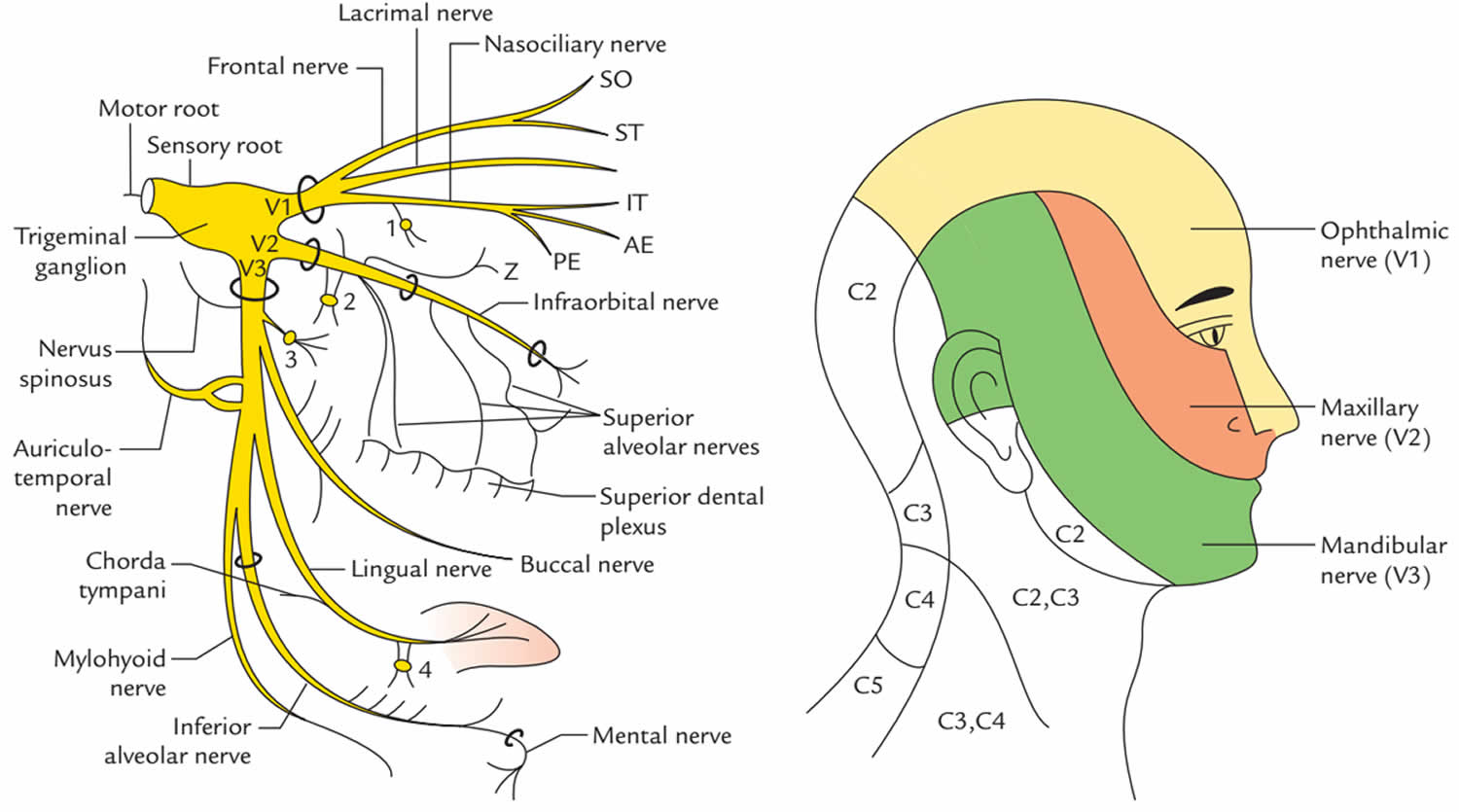
Branches Of Maxillary Nerve slidesharedocs
Maxillary nerve is the 2nd branch of the trigeminal nerve. INTRODUC. Let's learn the course and branches of the maxillary nerve in this video in a unique way.

[PDF] A review of the mandibular and maxillary nerve supplies and their clinical relevance
The maxilla, also known as the upper jaw, is a vital viscerocranium structure of the skull. It is involved in the formation of the orbit, nose and palate, holds the upper teeth and plays an important role for mastication and communication.
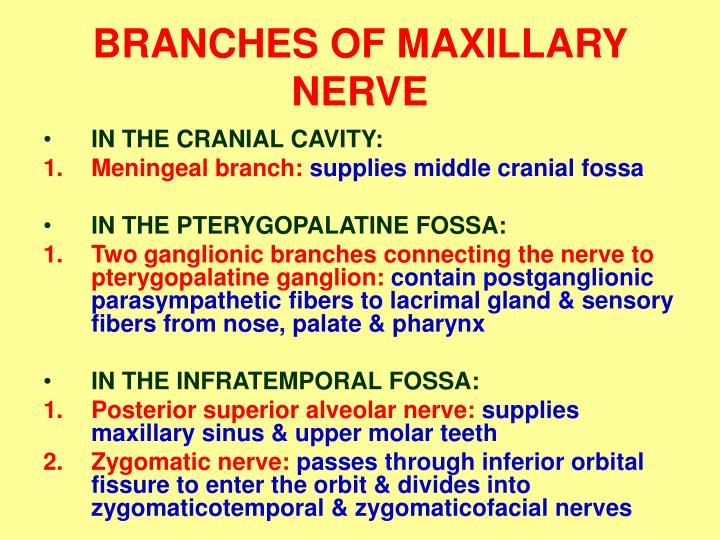
PPT INFRATEMPORAL FOSSA II MAXILLARY NERVE & VESSELS PowerPoint Presentation ID1377415
The maxilla is the most important bone of the midface. It has a central location and provides structural support to the viscerocranium. It has functional and aesthetic significance as it has a fundamental role in facial architecture, separates the nasal and oral cavities, forms the upper jaw, and contains the maxillary sinus. [1] [2] Go to:
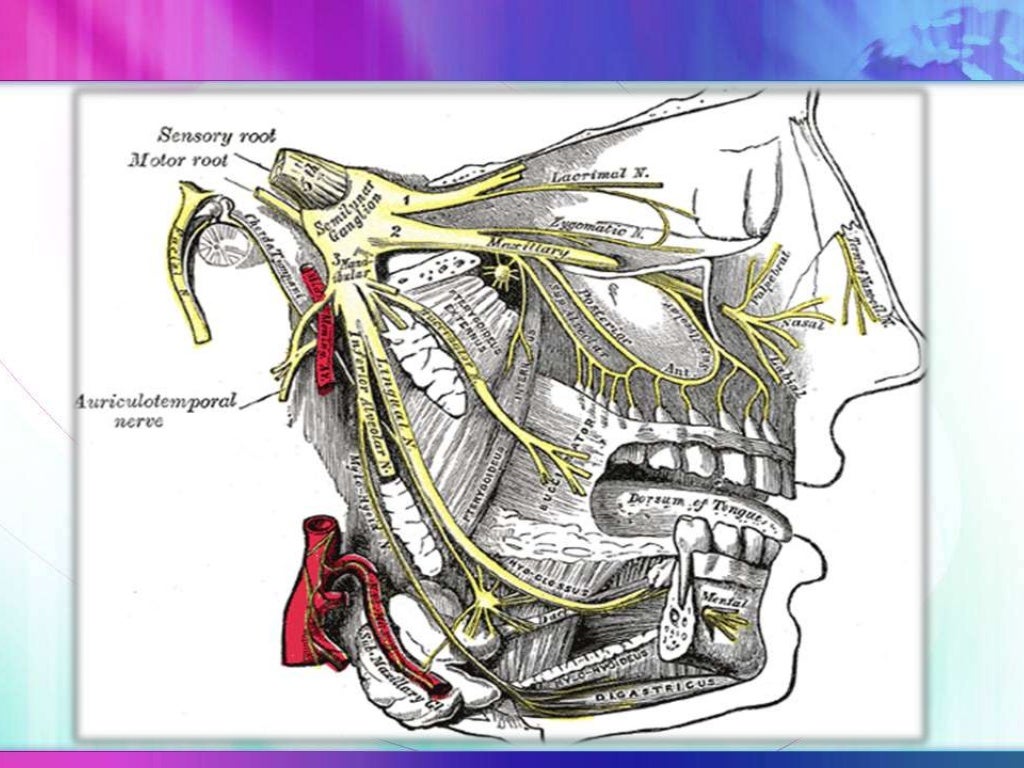
The maxillary nerve
This is the preview of our tutorial about the maxillary nerve, one of the trigeminal nerve's branches. Watch the full video about this essential nerve on htt.

Maxillary Nerve Medical anatomy, Anatomy and physiology, Dental hygienist school
Maxillary nerve is the 2nd division of trigeminal nerve. It is a pure sensory nerve. It commences from the anterior aspect of trigeminal ganglion. It passes along the lateral wall of the cavernous sinus. It then leaves the cranial cavity via foramen rotundum and enter pterygopalatine fossa.
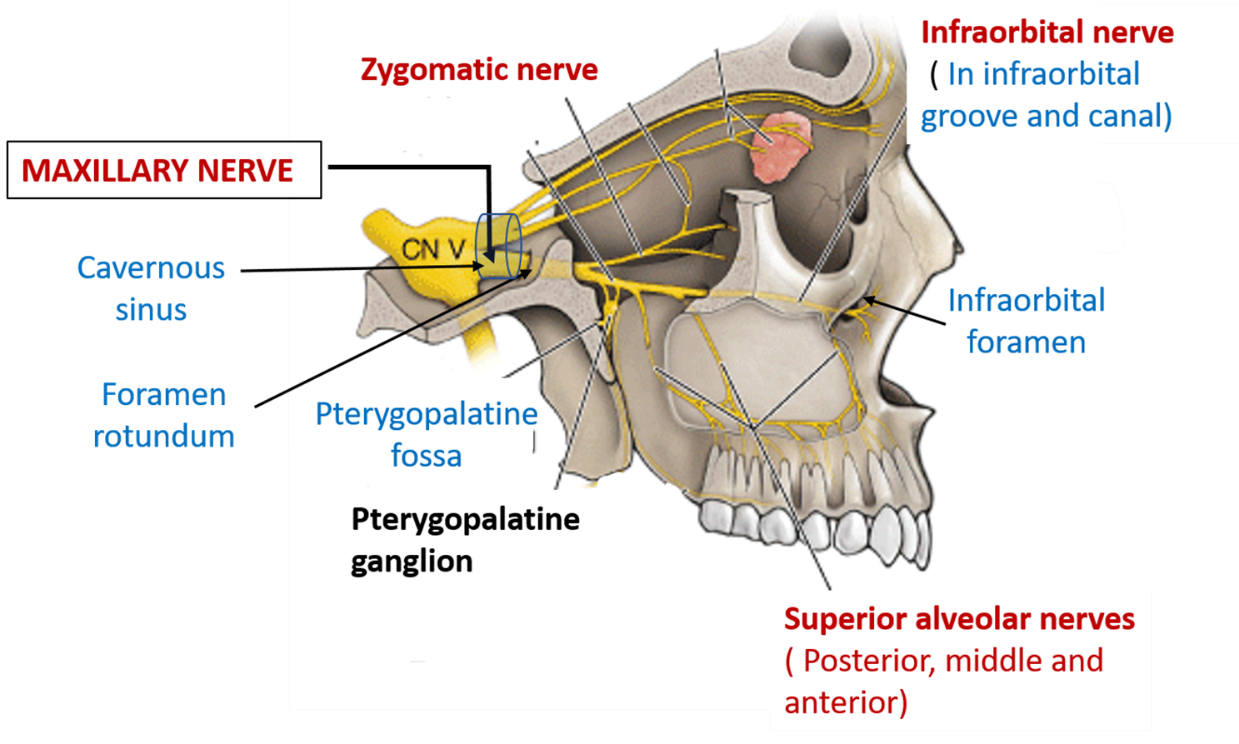
Maxillary Nerve , Origin, Course and Branches , Anatomy QA
The maxillary nerve is the second of three branches of the trigeminal nerve. It arises between the trigeminal's ophthalmic and mandibular divisions in a region called the trigeminal ganglion, a cluster of nerves involved in relaying sensory information to the brain as well as chewing motor function.
:watermark(/images/logo_url.png,-10,-10,0):format(jpeg)/images/anatomy_term/radix-sensoria-ganglii-pterygopalatini/lEFLkB2jDlrYweiIz8E3Q_Rr._ganglionares_m01.png)
Maxillary nerve (CN V2) Anatomy and function Kenhub
1/3 Synonyms: Antrum of Highmore, Maxillary paranasal sinus , show more. The maxillary sinus is the largest paranasal sinus situated in the body of the maxilla. The maxillary sinus is connected with the middle nasal meatus via the maxillary ostium. The maxillary sinus is bordered by three main walls:

Maxillary Nerve Origin, Course and Branches
As we've seen, the maxillary nerve runs forwards from the trigeminal ganglion, and enters the foramen rotundum, which is here. Here's the foramen rotundum in the dry bone. We'll go round to the outside to see where it emerges. Here it is, well hidden in the pterygo-maxillary fissure.

Maxillary nerve branches 4 YouTube
The Maxillary Nerve [Vb; V2] (n. maxillaris; superior maxillary nerve), or second division of the trigeminal, is a sensory nerve. It is intermediate, both in position and size, between the ophthalmic and mandibular. It begins at the middle of the semilunar ganglion as a flattened plexiform band, and, passing horizontally forward, it leaves the skull through the foramen rotundum, where it.
:watermark(/images/watermark_only.png,0,0,0):watermark(/images/logo_url.png,-10,-10,0):format(jpeg)/images/anatomy_term/maxillary-nerve/JAbjGnMvbgIz4s4dMFNOA_N._maxillaris_02.png)
Maxillary nerve (CN V2) Anatomy and function Kenhub
The maxillary nerve emerges from the anterior portion of the trigeminal ganglion, just inferior to the ophthalmic nerve. It runs anteriorly, passing through the lateral portion of the cavernous sinus until it reaches the foramen rotundum. It passes through the foramen rotundum to enter the upper pterygopalatine fossa.

Maxillary nerve Branches, course (preview) Human Anatomy Kenhub YouTube
Treatment. The maxilla is a bone which helps to make up the skull. It is specifically located in the mid face, forms the upper jaw, separates the nasal and oral cavities, and contains the maxillary sinuses (located on each side of the nose. One of the maxilla's most important functions is to make up the architecture of our faces and to support.
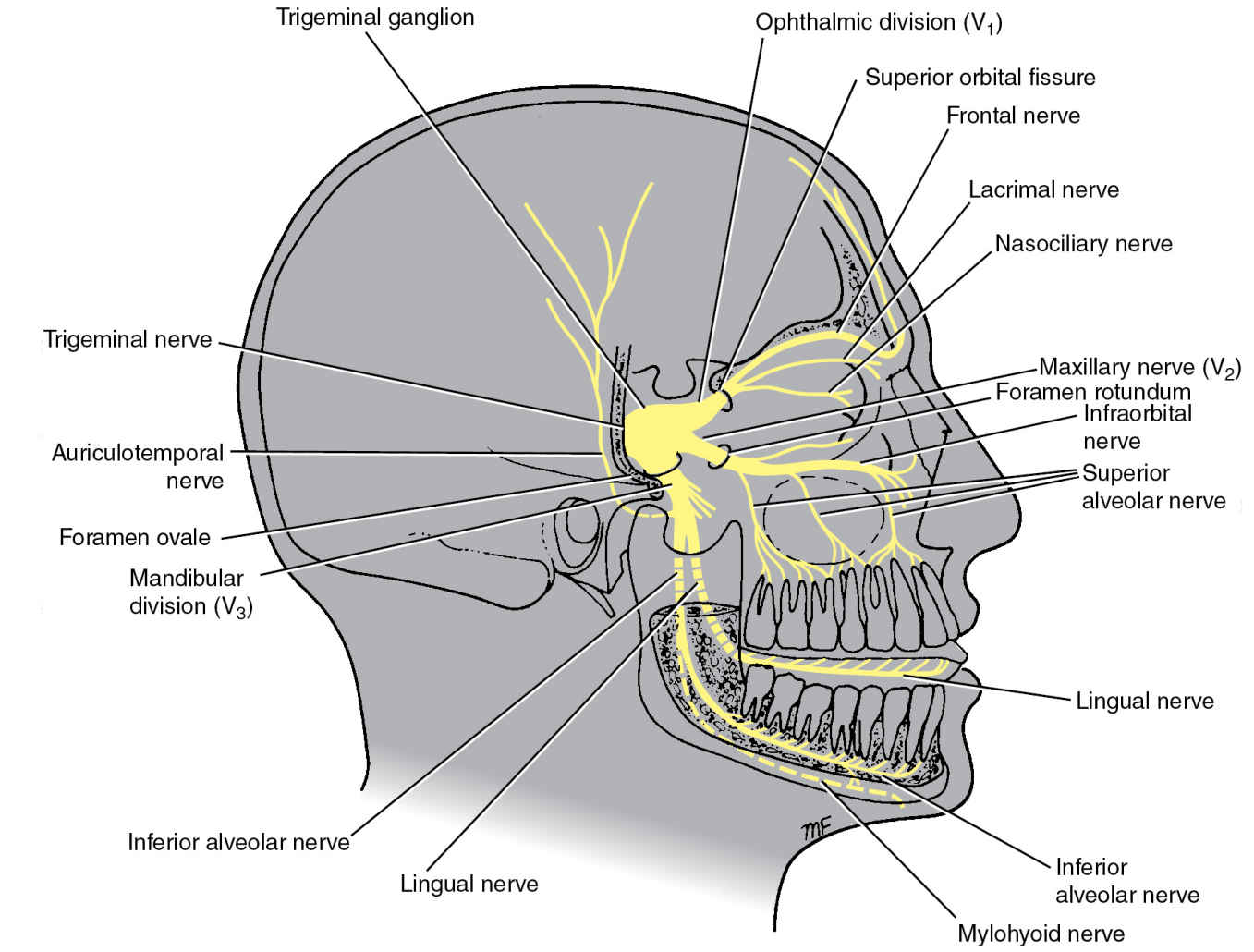
The Cranial Nerves Radiology Key
The maxillary sinus is intimately related to the roots of the posterior maxillary teeth; the high frequency of mucosal disease and sinusitis of odontogenic aetiology is now well recognized.
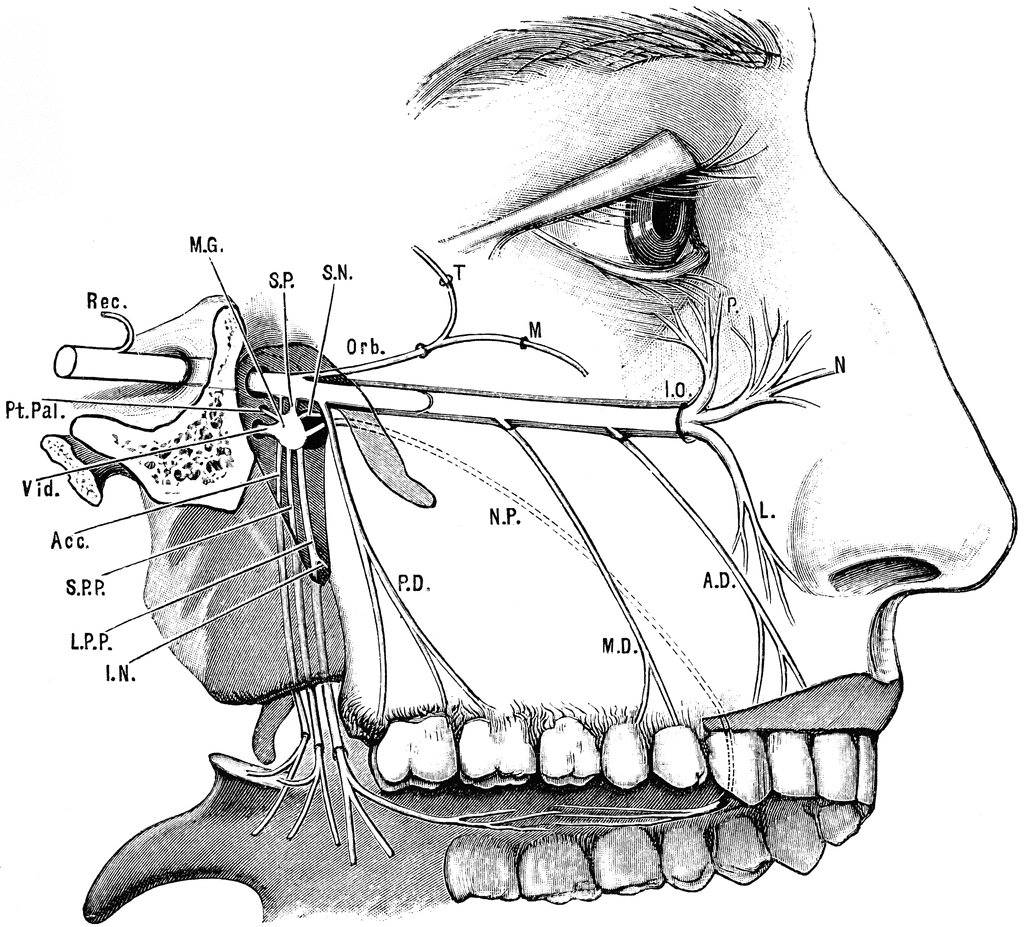
Superior Maxillary Nerve ClipArt ETC
Maxillary Nerve. The maxillary nerve, or second division of the trigeminal, is a sensory nerve that crosses the pterygopalatine fossa, traverses the orbit in the infraorbital groove and canal in the floor of the orbit, and appears upon the face at the infraorbital foramen as the infraorbital nerve. From: Cosmetic Facial Surgery, 2011.

Maxillary Nerve Lateral View Diagram Quizlet
The maxillary nerve (V2) is the middle sized branch of the trigeminal nerve - the largest of the cranial nerves. The V2 is a purely sensory nerve supplying the maxillary teeth and gingiva, the.

Maxillary nerve branches 2 YouTube
PMID: 31194417 Bookshelf ID: NBK542277 Excerpt The fifth cranial nerve, known as the trigeminal nerve (V), is the largest of the twelve cranial nerves and carries both sensory and motor fibers. It has three terminal branches, which in descending order are ophthalmic nerve (V1), maxillary nerve (V2), and mandibular nerve (V3).